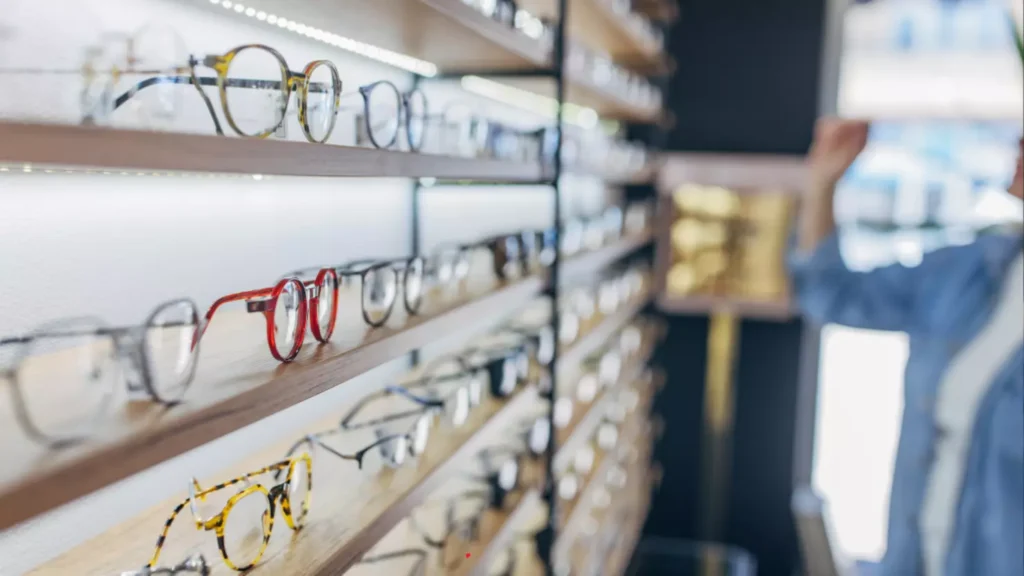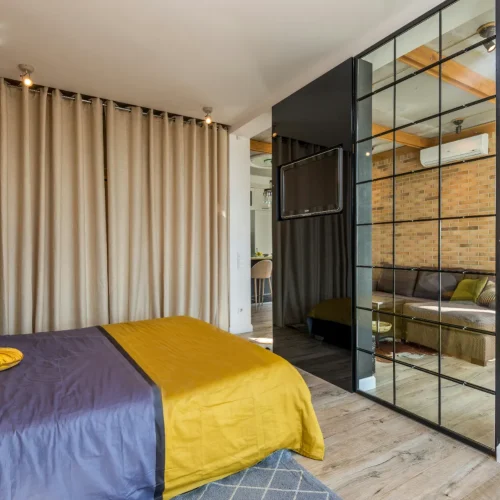
Custom lenses allow each person to match eyewear with personal style, comfort, and eye care needs. They can adjust lens color, coating, and material to create glasses that protect eyes, feel comfortable all day, and look great in any setting. This balance of fashion and function turns eyewear into more than a vision tool—it becomes part of daily expression and comfort.
People can choose subtle tints for a modern look or deeper shades for outdoor glare control. Coatings that reduce reflections, block UV rays, or resist scratches add both comfort and durability. Material options like polycarbonate or high-index plastic make lenses lighter and thinner, which improves fit and wearability.
As technology advances, customization continues to expand. From lenses that adapt to light changes to filters that reduce digital eye strain, the possibilities help each person match lenses to lifestyle and environment. This guide explores these choices and explains how thoughtful customization supports both style and eye health.
Key Ways to Customize Lenses for Fashion, Comfort, and Protection
People can personalize their eyewear to match their vision needs, personal style, and eye health. Lens type, tint, coating, and frame adjustments all affect how glasses look, feel, and perform in daily use.
Choosing the Right Lens Type for Your Needs
Lens type determines how well glasses correct vision and suit daily activities. Single vision lenses correct one field of vision, such as distance or reading. Bifocal lenses combine two areas for near and far vision, while progressive lenses provide a smooth transition between distances without visible lines.
Material also affects comfort and durability. Polycarbonate and Trivex lenses resist impact and weigh less, making them good for active use or children. High-index plastic lenses stay thinner for people with strong prescriptions.
Those who want to keep their favorite frames can order replacement lenses for old glasses to update prescriptions or add new coatings without buying a new pair. This option saves cost and reduces waste while preserving a comfortable fit.
Selecting Lens Tints and Gradient Tints for Style and Function
Tints change how lenses look and how they handle light. Clear lenses work for everyday wear, while tinted lenses in gray, brown, or green reduce glare and sharpen contrast outdoors. Gradient tints fade from dark to light, giving a stylish look while keeping top-down sunlight out of the eyes.
Polarized lenses cut glare from roads and water, which helps drivers and people who spend time outside. Photochromic lenses darken in sunlight and return to clear indoors, offering convenience for those who move between environments often.
Color choice also affects comfort. Brown and amber shades improve depth perception, while gray tints keep colors true. Matching tint strength to lifestyle helps balance fashion and function without sacrificing visibility.
Improving UV Protection and Eye Safety
Ultraviolet rays can damage the eyes over time, leading to eye strain and other long-term problems. Lenses with UV-blocking coatings protect against both UVA and UVB rays. This protection matters for anyone who spends time outdoors or near reflective surfaces like water or snow.
Polarized and photochromic lenses often include UV protection, adding another layer of safety. For added defense, some lenses include coatings that also filter blue light from screens, which helps reduce digital eye fatigue.
Regular replacement of scratched or damaged lenses keeps UV protection effective. Even small scratches can weaken coatings and reduce clarity, so proper care and timely updates maintain both safety and vision quality.
Optimizing Comfort with Frame and Fit Adjustments
Comfort depends on more than lens type. The frame must fit the wearer’s face shape and daily habits. Lightweight materials like titanium or acetate reduce pressure on the nose and ears. Adjustable nose pads and flexible temples help keep glasses stable during movement.
Proper alignment keeps lenses centered with the eyes, which prevents strain and distortion. People who reuse frames for new prescriptions should check alignment after lens replacement.
A well-fitted pair of glasses feels natural and supports long wear without discomfort. Balancing lens design with frame comfort allows users to see clearly while maintaining a clean, stylish appearance.
Advanced Customization Options and Benefits
Modern eyeglasses now combine visual precision, style, and protection. Lens customization allows people to match their prescription, comfort needs, and design preferences while also guarding their eyes from light and impact. Each feature supports both clear sight and a personalized look.
Vision Correction and Prescription Integration
Custom lenses can match a person’s exact prescription for distance, reading, or both. Single vision lenses correct one field of vision, while bifocal and progressive lenses help with multiple distances. Progressive lenses allow smooth focus changes without visible lines, which many find more natural.
Prescription integration also considers eye alignment and frame shape. Proper fitting helps reduce eye strain and provides balanced vision across the lens surface.
Some lenses include digital surfacing technology that refines curvature for sharper focus. This process creates lenses that match unique prescription details more precisely than traditional methods. The result is clearer sight and less visual distortion.
Material Choices: Glass Lenses and Modern Alternatives
Glass lenses remain valued for their clarity and scratch resistance. However, they weigh more and may break more easily than newer materials. For those who prefer lighter eyewear, polycarbonate and Trivex lenses provide strong impact resistance and comfort for daily wear.
High-index plastic lenses help reduce thickness for strong prescriptions. They create a slimmer look without losing optical quality. People who wear glasses all day often appreciate the lighter weight and balanced feel of these materials.
Each lens material affects both comfort and appearance. Therefore, choosing the right one depends on lifestyle, prescription strength, and personal preference.
Specialized Coatings and Treatments
Coatings can improve both vision quality and eye safety. Anti-reflective coatings reduce glare from screens and headlights, while scratch-resistant layers protect against daily wear. UV protection coatings help block harmful rays that may contribute to long-term eye damage.
Blue light filters reduce digital eye strain for those who spend hours in front of devices. Photochromic treatments darken lenses outdoors and clear indoors, offering convenience without switching glasses.
Each treatment adds a specific benefit. By combining coatings, users can create eyeglasses that support clear sight, comfort, and lasting protection in different environments.
Conclusion
Custom lenses allow people to match their eyewear to their personal needs and lifestyle. They can choose lens types, materials, and coatings that balance fashion, comfort, and protection.
Features such as UV filters, anti-reflective coatings, and blue light protection help reduce eye strain and shield against harmful rays. At the same time, tints and colors let wearers express individual style while improving visual clarity in different environments.
By understanding these options, anyone can create eyewear that looks good, feels comfortable, and protects their eyes each day.













